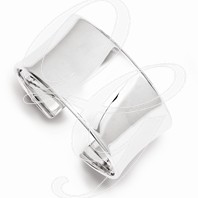Metal Facts
GoldGold is the metal that never goes out of style. The earliest gold jewelry dates from around 6,000 years ago. The color of gold jewelry is determined by alloying other metals to pure 24 karat gold.Gold’s purity is measured in karats: • 24 karat gold is 100% pure • 18 karat gold is 75% pure  • 14 karat gold has 58.5% gold content • 10 karat gold has 41.6% content Yellow gold is the most natural, warm and sensual color. White gold is created by alloying pure gold with zinc, palladium and silver and requires rhodium plating after refinishing. Copper is combined with pure gold to make a pink or rose gold statement. Gold is rich and it is practical. Celebrate the glory of gold and let its beauty express your style. PlatinumPlatinum is distinct from all other metals - it is rare, pure and precious; its name is derived from the Spanish term “platina”, which is literally translated into “little silver”. It is ideal for those whose skin in sensitive to jewelry. The distinct, natural white tone is incomparable, and a soft patina paints the jewelry item with an antique hue as time passes. Observe platinum’s weight and study its texture. This hypoallergenic metal will not react to the body’s natural chemicals, so it never tarnishes or changes color.• Platinum is 95% or 92% pure .jpg) FUN FACTS • The frame of the Crown of Queen Elizabeth the Queen Mother, manufactured for her coronation as Consort of King George VI, is made of platinum. It was the first British crown to made of this particular metal. • Of the 245 tons of platinum sold in 2010, 113 tons were used for vehicle emissions control devices (4%); 76 tons for jewelry (31%); and the remaining 35.5 tons went to various other minor applications
Palladium is a white metal that lives in the family of Platinum group metals. It is mined in some of the same places as platinum and shares similar qualities. Palladium is precious and pure, so you can make a close comparison of its relation to platinum. |

